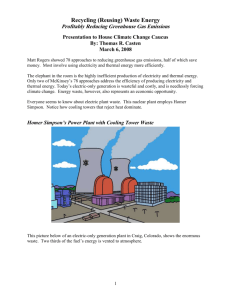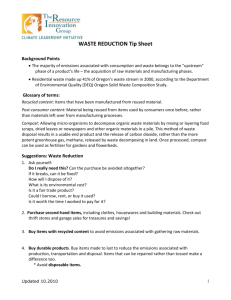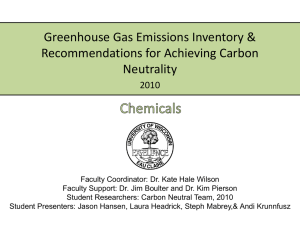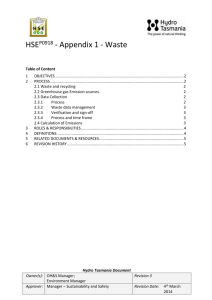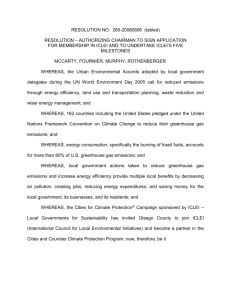What is the link between solid waste and climate change
advertisement
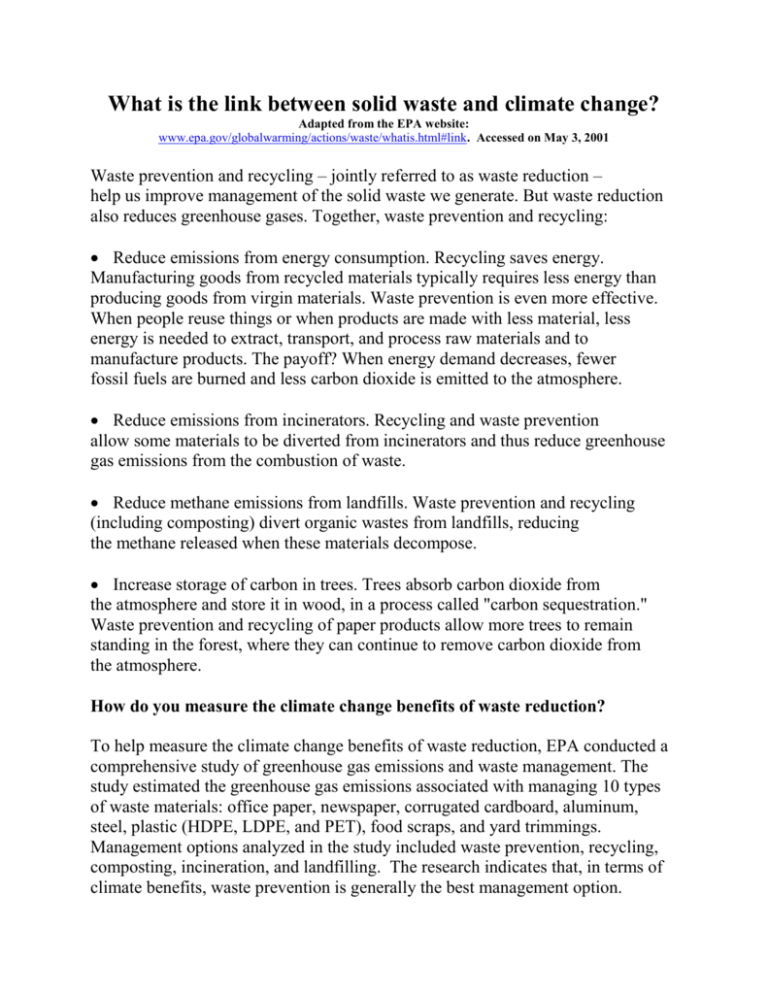
What is the link between solid waste and climate change? Adapted from the EPA website: www.epa.gov/globalwarming/actions/waste/whatis.html#link. Accessed on May 3, 2001 Waste prevention and recycling – jointly referred to as waste reduction – help us improve management of the solid waste we generate. But waste reduction also reduces greenhouse gases. Together, waste prevention and recycling: Reduce emissions from energy consumption. Recycling saves energy. Manufacturing goods from recycled materials typically requires less energy than producing goods from virgin materials. Waste prevention is even more effective. When people reuse things or when products are made with less material, less energy is needed to extract, transport, and process raw materials and to manufacture products. The payoff? When energy demand decreases, fewer fossil fuels are burned and less carbon dioxide is emitted to the atmosphere. Reduce emissions from incinerators. Recycling and waste prevention allow some materials to be diverted from incinerators and thus reduce greenhouse gas emissions from the combustion of waste. Reduce methane emissions from landfills. Waste prevention and recycling (including composting) divert organic wastes from landfills, reducing the methane released when these materials decompose. Increase storage of carbon in trees. Trees absorb carbon dioxide from the atmosphere and store it in wood, in a process called "carbon sequestration." Waste prevention and recycling of paper products allow more trees to remain standing in the forest, where they can continue to remove carbon dioxide from the atmosphere. How do you measure the climate change benefits of waste reduction? To help measure the climate change benefits of waste reduction, EPA conducted a comprehensive study of greenhouse gas emissions and waste management. The study estimated the greenhouse gas emissions associated with managing 10 types of waste materials: office paper, newspaper, corrugated cardboard, aluminum, steel, plastic (HDPE, LDPE, and PET), food scraps, and yard trimmings. Management options analyzed in the study included waste prevention, recycling, composting, incineration, and landfilling. The research indicates that, in terms of climate benefits, waste prevention is generally the best management option. Recycling is the next best approach. The research enables waste managers to analyze their potential to reduce Greenhouse Gas (GHG) emissions based on the characteristics of their community's waste stream and the management options available to them. Waste prevention makes an important difference in reducing emissions: by cutting the amount of waste we generate back to 1990 levels, we could reduce greenhouse gas emissions by 11.6 million metric tons of carbon equivalent (MTCE), the basic unit of measure for greenhouse gases. EPA estimates that increasing our national recycling rate from its current level of 28 percent to 35 percent would reduce greenhouse gas emissions by another 9.8 million, compared to landfilling the same material. Together, these levels of waste prevention and recycling would slash emissions by more than 21.4 million MTCE – an amount equal to the average annual emissions from the electricity consumption of 11 million households. Every little bit helps! For example, by recycling all of its paper, plastic, and corrugated waste generated in one year, an office building of 7,000 workers could reduce greenhouse gas emissions by 1200 MTCE. This is equivalent to taking about 900 cars off the road that year. If just one household generated 5 percent less waste including newspapers, aluminum and steel cans, and plastic containers and then recycled what remained, 309 pounds of carbon equivalent could be reduced.

